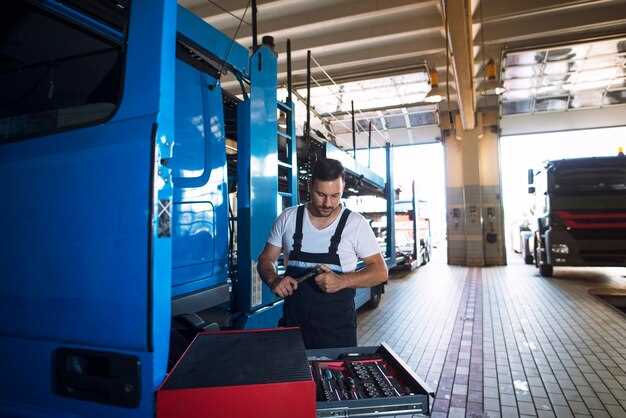
When it comes to maximizing efficiency on the job site, having the right toolbox for your work truck is crucial. The right toolbox not only organizes your tools but also protects them from the elements and ensures they are easily accessible when you need them. In this article, we will explore the various types of toolboxes available and guide you in selecting the one that best fits your needs.
Choosing the right toolbox involves considering several factors such as size, material, lock mechanisms, and mounting options. Each of these aspects plays a vital role in ensuring that your tools are secure and that your work truck remains organized. A well-thought-out toolbox can streamline your workflow, saving you time and reducing frustration as you navigate your projects.
Moreover, understanding the specific requirements of your trade can help narrow down your options. Whether you are a contractor, electrician, or plumber, selecting a toolbox that caters to the unique demands of your profession will enhance your productivity and ensure that you have what you need at your fingertips. We will delve into the different types of toolboxes available and how to evaluate them based on your specific requirements.
Assessing Your Specific Tool Requirements for Different Tasks

When equipping your work truck with the right toolboxes, it is crucial to evaluate your specific tool requirements based on the tasks you frequently perform. Different jobs demand various tools, and understanding this will help you optimize your toolbox selection.
Begin by listing the primary tasks you undertake in your profession. For instance, if you are involved in electrical work, you will need toolboxes that can accommodate insulated tools, wire strippers, and testing equipment. Conversely, a plumbing technician will require space for wrenches, pipe cutters, and fittings. Identifying these core tools will provide a clear foundation for your toolbox needs.
Next, consider the scale and frequency of your tasks. If you handle larger projects that require heavy-duty equipment, ensure your toolbox can support larger tools like drills, saws, or impact wrenches. For more routine, smaller repairs, a compact toolbox with essential hand tools may suffice. Assessing the size and weight of tools will also guide your choice, ensuring that the toolbox is appropriately sized and durable enough to carry the load.
Another key factor is the accessibility of tools. A well-organized toolbox with designated compartments or trays can significantly enhance efficiency during work. Design tools according to how frequently you use them; frequently used items should be easily accessible, while others can be stored in less convenient locations. This organization saves time and helps maintain productivity on the job site.
Lastly, consider the environment in which you operate. For outdoor work or locations exposed to the elements, a weatherproof toolbox is essential to protect your tools from corrosion and damage. Additionally, if you work in varied conditions, look for toolboxes designed for mobility, allowing you to transport equipment easily and securely.
By carefully assessing your specific tool requirements based on the tasks at hand, you can select the right toolboxes for your work truck, ultimately enhancing your efficiency and effectiveness on the job.
Comparing Material Durability and Weather Resistance in Toolboxes

When selecting a toolbox for your work truck, understanding the durability and weather resistance of various materials is crucial. Toolboxes are exposed to different environmental conditions, which can significantly affect their longevity and functionality.
The most common materials used in toolboxes include steel, aluminum, and plastic. Steel toolboxes are renowned for their strength and durability. They can withstand heavy impacts and are ideal for transporting heavy tools. However, steel is prone to rust and corrosion if not properly coated or maintained, making it less suitable for humid or rainy environments unless treated with protective coatings.
Aluminum toolboxes offer a lightweight alternative to steel with excellent resistance to rust. They are less likely to corrode due to exposure to moisture, which makes them a good option for various climates. However, they can be more susceptible to dents and scratches. Aluminum’s inherent strength is sufficient for many applications, but users should consider fortifying it for extreme conditions or heavy loads.
Plastic toolboxes, often made from high-density polyethylene or polypropylene, are lightweight and resistant to rust and corrosion. These materials are also relatively impact-resistant, making them suitable for light to moderate tool storage. Nevertheless, plastic toolboxes may not provide the same level of security or durability as metal options, particularly in extreme conditions or when subjected to heavy use.
Furthermore, weather resistance varies within material categories. Toolbox designs often include seals and gaskets that enhance water resistance, regardless of the material. When evaluating a toolbox, consider the quality of these features alongside material composition. Seal integrity can prevent moisture infiltration, protecting your tools from damage.
Ultimately, the choice of material depends on the specific requirements of your work environment. For high-stress or diverse weather situations, steel or aluminum might be preferable. In contrast, for lighter, less demanding situations, plastic could suffice. Analyze the balance between weight, durability, and environmental exposure when choosing the right toolbox for your work truck.
Choosing the Right Size and Configuration for Optimal Space Utilization
When it comes to selecting toolboxes for your work truck, size and configuration are paramount for maximizing space efficiency. The first step is to assess the dimensions of your truck bed, taking into account both length and width. Understanding these measurements ensures that you choose a toolbox that fits seamlessly within the available area, preventing unnecessary overhang or wasted space.
Next, consider the storage needs based on the type of work you perform. A contractor may require a toolbox with compartments specifically designed for power tools, while an electrician might need a configuration that accommodates various smaller tools and supplies. Identify the tools you use most frequently and select a toolbox that allows easy access and organization.
Additionally, the orientation of the toolbox plays a critical role in space utilization. Some toolboxes are designed to mount along the side of the truck bed, while others can be positioned under or above the bed. Side-mounted models can provide additional space for larger items, whereas under-bed setups create more room on top for larger loads or other equipment. Choose an arrangement that complements your workflow and enhances accessibility.
Another factor to consider is the layout of the compartments within the toolbox. Opt for configurations that allow customization, such as adjustable dividers or removable bins. This flexibility ensures that your toolbox can adapt to changing needs, keeping you organized without sacrificing space.
Lastly, evaluate the weight capacity of the toolbox against the tools and materials you regularly transport. Ensuring your chosen toolbox can bear the load without compromising the truck’s handling and efficiency is essential for both safety and longevity. Select a sturdy, durable material that will withstand the rigors of frequent use while keeping your tools secure and well-organized within the limited space of your work truck.




